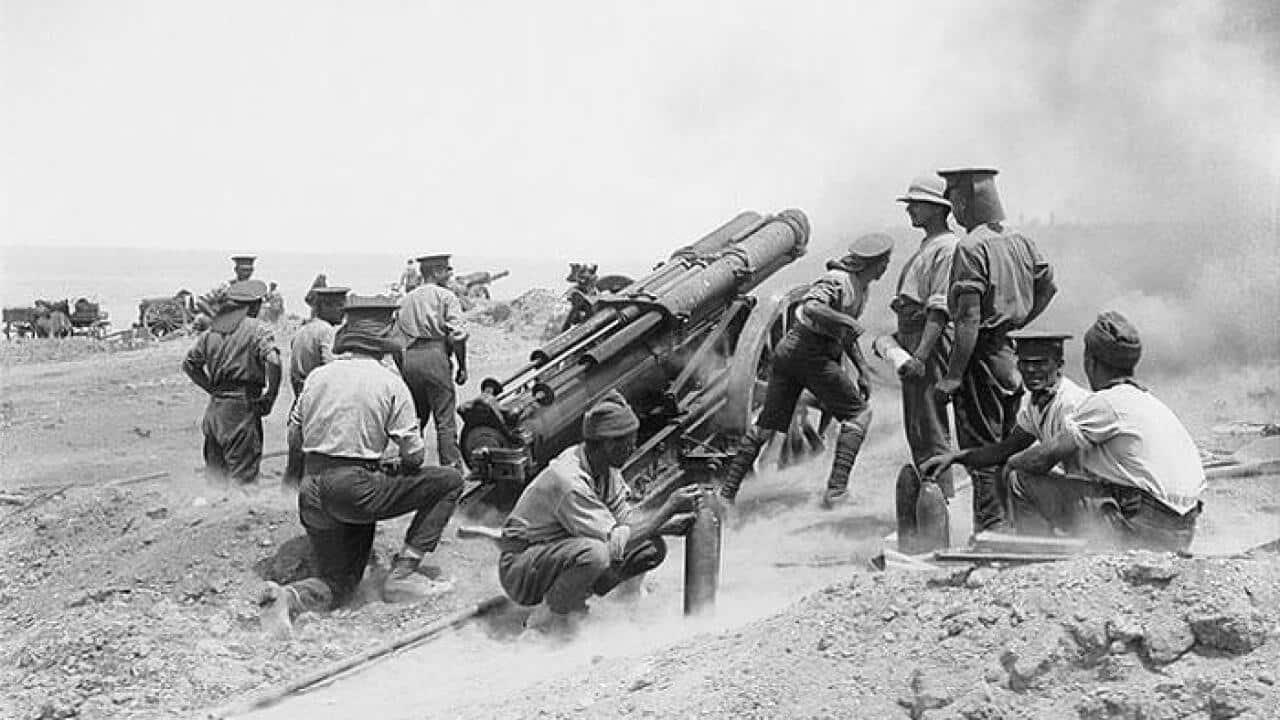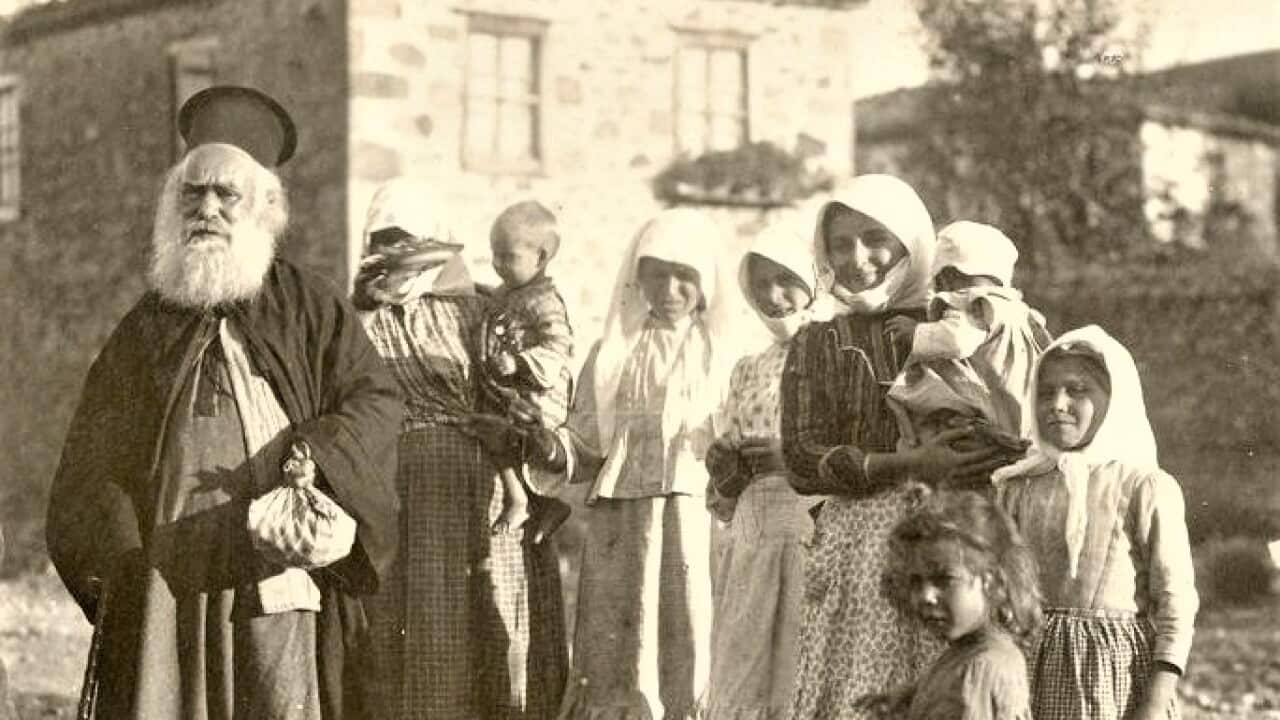Apart from historians, not many of us knew the story of the small village of Krithia at the tip of the Thracian Peninsula, which is now widely known as the Gallipoli Peninsula.
Its residents experienced the dramatic events during and after the Gallipoli Campaign; the three Battles of Krithia in 1915 and the Asia Minor Catastrophe in 1922, according to the president of the Krithia Association of Australia, Chrysanthi Staboulidou.

Memorial service for the 40th Anniversary of Krithia Association of Australia at Melbourne's Shrine of Remembrance in May 2018 Source: Supplied
A prosperous community
Before the Great War, Krithia had a thriving community with a population of 3,500 people. Most of the 440 houses were double-storey, built from stone, with their own courtyard to house livestock and their own wells.
There was a church with a cemetery, 5 small chapels around the outskirts of the village, and a primary school with 250 students. The majority of Krithians were farmers, tilling the land of poppies, daisies and barley.
In fact, the village was known for its food which was supplied the Turkish army during the Gallipoli campaign, as well as providing a commanding view of Cape Hellas and the coast.

Kris Stamboulidis, at the 40th Anniversary of Krithia Association of Australia at Melbourne's Shrine of Remembrance in May 2018 Source: Supplied
A small community with an extended history
The name of the village Krithia is written on Canberra’s War Memorial. But Krithia’s history began long before the Gallipoli campaign - many centuries ago, lost in the haze of Greek mythology, the Trojan War and Athenian expansion and settlement in the area.
As geographer Claudius Ptolemaeus writes in his "Books of Geography" (Book 3, Chapter 6): “Krithia in 138 AD, was an ancient town, built by Athenians who settled in the area”.
Krithia came under Roman, Byzantine, Venetian, Catalonian, and Ottoman rule over the centuries but it remained a Greek settlement from antiquity until 1922.

Map of Krithia village, at Gallipoli Peninsula (Helles Cape) Source: Wikipedia
The Gallipoli Campaign
Krithia was named after the grain "krithos", meaning "barley", and it was cultivated widely on the land. It is in these fields of barley and wheat, on a warm spring day in 1915 that the 6th Battalion of the ANZACS arrived, a couple of kilometers from Krithia.
The Battalion, without prior warning, was told to line up and advance towards Krithia. They marched across open, flat terrain without any time to adequately prepare themselves.
Krithians were forcibly removed, collecting whatever belongings they could carry and marched to Madytos, the nearest Greek town. But a few days later, Madytos was bombed by the British targeting and destroying the Turkish arsenal supplies which were hidden in Greek Orthodox churches and other key buildings.
Unfortunately, many civilians were killed, amongst them Krithians, as no civilians were notified to leave on time.

The president of Krithia Association of Australia, Kris Stamboulidis. Source: SBS Greek
From WWI to the Asia Minor Catastrophe
At the end of the First World War in 1918, Krithia's people were completely devastated by the bombardments of the battles.
They were on the move and they settled into abandoned houses and army barracks at Cape Helles, where they remained until 1922.
Many Krithians were employed by the ANZACS to recover and bury the bodies of our Australian soldiers and to build the cemetery at Krithia.
In 1922, and after the Catastrophy of Smyrne and the end of the Turkish Greek War, Krithias were forced to flee by boats to Greece where they established a settlement, not far from the City of North of Thessaloniki.

French Colonial 75-mm gun in action near Sedd el Bahr, near Helles Cape Source: Wikipedia
Resettlement to Greece
The first refugees to settle in the new Krithia village lived in tents for 2 years.
"This is where our parents were born, living through the Second World War with the German occupation and the devastation of the civil war that followed", Ms Staboulidou told SBS Greek.
Ravaged by poverty, large families and hardship, many Krithians were forced to take the road of migration for a better future. From 1952 through to the mid-1960s, mass migration saw many Krithians come to Australia, with most settling in Melbourne.
The Krithia Association of Australia was first established on the 9th of April 9 in 1978, sixty years after the end of the Great War.
Press Play on the main photo and listen the podcast (In Greek)







